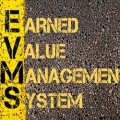
Assigning work is relatively easy, but how do you ensure that the deadlines will be met, the project will come in under budget, or that the quality level will be acceptable to the stakeholders?
Fortunately, project management fundamentals contain techniques which are used to track and control the project.
Earned Value Analysis
Any discussion on project control invariably starts with earned value analysis.
The triple constraints of time, cost, and quality represent a trade off for all projects. If you need more from one variable, you need to sacrifice the other two, for example, if you need better quality, you will need to increase cost and time. This is how the concept of limited resources translates into projects at their core.
Earned value analysis seeks to control two of these three variables:
- Schedule (time)
- Cost
Earned value analysis is performed at regular intervals, such as weekly, and the end results are, as a minimum, two numbers: A schedule variance and a cost variance. These are numerical values representing how far behind (or ahead) the project is. There are others which are derived from these, but to implement the method you need to calculate at least those two.
But before you calculate them, you must have a baseline to track against. Being ahead or behind doesn’t mean anything if you can’t define what you’re ahead or behind of. Your project must have a work breakdown schedule, which is project management language lingo for dividing the project up into constituent tasks. You don’t need to make a graphical chart, but each task needs to have the following pieces of information:
- Start and end dates
- A task budget.
Most projects already have these defined, but if you don’t you will have to define them before you can measure against them.
Before we continue, the following definitions are required:
- Planned Value (PV): At any point in time, the amount of the task that is supposed to have been completed, in dollar terms. A linear interpolation works as good as any. Also known as Budgeted Cost of Work Scheduled (BCWS).
- Earned Value (EV): At any point in time, the amount of the task that is actually completed, in dollar terms. Also known as Budgeted Cost of Work Performed (BCWP).
- Actual Cost (AC): The actual cost to the organization of the work that has been performed. Also called Actual Cost of Work Performed (ACWP).
- Budget at Completion (BAC): The total of all task budgets, i.e. the project budget.
- Cost Performance Index (CPI): The cost variance expressed in percentage terms, for example, CPI = 1.2 means the project is 20% over budget.
- Schedule Performance Index (SPI): The schedule variance expressed in percentage terms, for example, SPI = 1.3 means the project 30% behind schedule.
- Estimate at Completion (EAC): The expected budget at the end of the project given the variances that have already taken place.
- Estimate to Complete (ETC): The expected cost to finish the rest of the project.
- To Complete Performance Index (TCPI): The required CPI necessary to finish the project right on budget. For example, TCPI = 1.25 means you need to find 25% efficiencies to finish on budget.
Earned Value Analysis – Procedure
To do a basic manual calculation using the earned value method, you would perform the following actions. This must be done individually for every task.
- Estimate the expected percent complete of each task. For example if the start and end dates of the task are June 1 and June 10, respectively, and it’s June 3 today, the expected percent complete is 30%.
- Convert this to a monetary value by multiplying by the task budget. This is called the Planned Value (PV), also known as the Budgeted Cost of Work Scheduled (BCWS).
- Estimate the actual percent complete of each task based on the number of hours of work completed, or some other relevant metric.
- Convert this to a monetary value by multiplying by the task budget. This is called the Earned Value (EV), also known as the Budgeted Cost of Work Performed (BCWP).
- Calculate the Schedule Variance. SV = EV – PV (aka BCWP – BCWS).
- Determine the actual cost of the task to date (AC) and then calculate the Cost Variance. CV = EV – AC (or BCWP – ACWP).
- Graph the results if you want to see the trend.
Interpreting the Results
If the schedule variance is negative, you are behind schedule (and vice versa). If the cost variance is negative, you are over budget (and vice versa). The actual amount of variance can be compared to employee charge out rates or something similar to ascertain how difficult it might be to recover. The results are as instantaneous as the input data, that is if you input the percent complete as of right now, the status is reported as of right now as well.
There are a few more optional steps that give you an even better idea of your project’s status:
- Calculate SPI = EV/PV. This is the schedule performance index, which gives you a view of the project status in percentage terms rather than absolute numbers.
- Calculate CPI = EV/AC. This is the cost performance index.
- Calculate EAC = AC + BAC – EV. This is the final project budget if the rest of the project went according to plan. There are several ways to extrapolate EAC, and this method is not definitive.
- Calculate ETC = EAC – AC. This is the amount of money you need to finish the project.
- Calculate TCPI = (BAC – EV) / (BAC – AC). This is the cost performance index that must be achieved to finish the project right on budget. For example, TCPI = 1.1 means you must find 10% efficiency to finish on budget.
A major assumption of the Earned Value method is that the task gets completed at a constant rate. Sometimes tasks have the bulk of their work at a certain concentrated time, or are otherwise very non-linear. If this is the case, you could make the necessary adjustments in step 1, simply skew the percent complete.
Obviously the whole calculation rests on an accurate percent complete guesstimation. A project manager could easily enter a slightly higher value to make the project look better. In other words, the system can be rigged. But that being said, the project cannot get tremendously out of hand no matter how badly you rig it, and it’s the big problems that cause most of the grief. Small variances are not usually the cause of the big project failures.
Scope Control
Earned value keeps the project on schedule and under budget. But another important are of project control is the project scope.
One of the biggest causes of project issues is called scope creep. This happens when tasks are slowly added to a project, eventually driving it over budget or behind schedule. It is very easy, even human nature, to allow a small additional task to be performed within a large project that can seem to easily absorb it. But collectively this is a recipe for project disaster.
To maintain an adequate control on the project scope, the project manager must do two things regularly. These could coincide with project status meetings:
- Examine the project scope statement, which is written out in the project management plan, to ensure it has not changed and is still relevant.
- Ensure that project team members are not working on additional tasks that have not been approved by the project manager.
Controlling the project scope is one of the most important things a project manager can do. If you don’t regularly revisit the project scope to ensure it doesn’t wander, you will need to include the proverbial project fire trucks within it.
Communications and Stakeholder Control
Another important area of project control involves stakeholder communications. Since there are plenty of examples of project managers thinking they are doing a much better job than their sponsors/customers/clients think they are doing, it is important to manage stakeholders and provide the right communication. The communication plan, a part of the project management plan, is intended to convey the regular communication needs of each stakeholder. Each stakeholder should be listed, together with their regular communication needs, the medium, and responses, if any.
The project manager doesn’t always see every client communication. Team members communicate technical items that can influence a stakeholder’s perception of whether the project is meeting their goals. The project manager must ensure the communication lines are always open to all stakeholders, and regular communication in the form of updates is often the answer.
At the project status meeting, or at any time the other project controls are implemented, the project manager must assess each stakeholder to ensure they are receiving the right communication, and follow up with any other concerns.
Risks
For small projects carried out by a technical expert, a written risk management plan might not be necessary. But the core concept is vital – The most important risks should always be known, prioritized and actively managed.
Every project has one or two major risks that everyone is aware of. For example, a plumbing project can contain a leak, or a new building construction project can have unexpected soil conditions. These are the high priority risks – those which have a high consequence to the company or probability of occurrence. The stakeholders generally do not need to be warned about these risks, although making sure they are talked about is essential. But that being said, it’s usually the lesser risks that prove the expertise of the project manager. Actively identifying and prioritizing risk can work wonders to the success of the project.
The project risks should have been itemized and prioritized within the project management plan in the form of a risk register (aka risk log). Coinciding with the regular status meetings, or sooner if necessary, project control should involve re-evaluating the risk log, striking off risks that did not occur, and re-prioritizing risks where circumstances have changed. Most importantly, the response plans are re-affirmed and reviewed with the project team.
Conclusion
These project controls make sure your project continues on the straight and narrow. Good project managers do not need to prime the proverbial “project fire engines” upon entering the execution phase, and this is not the way it should be. A good system of project control will pay for itself in many ways, both tangible and non-tangible.






